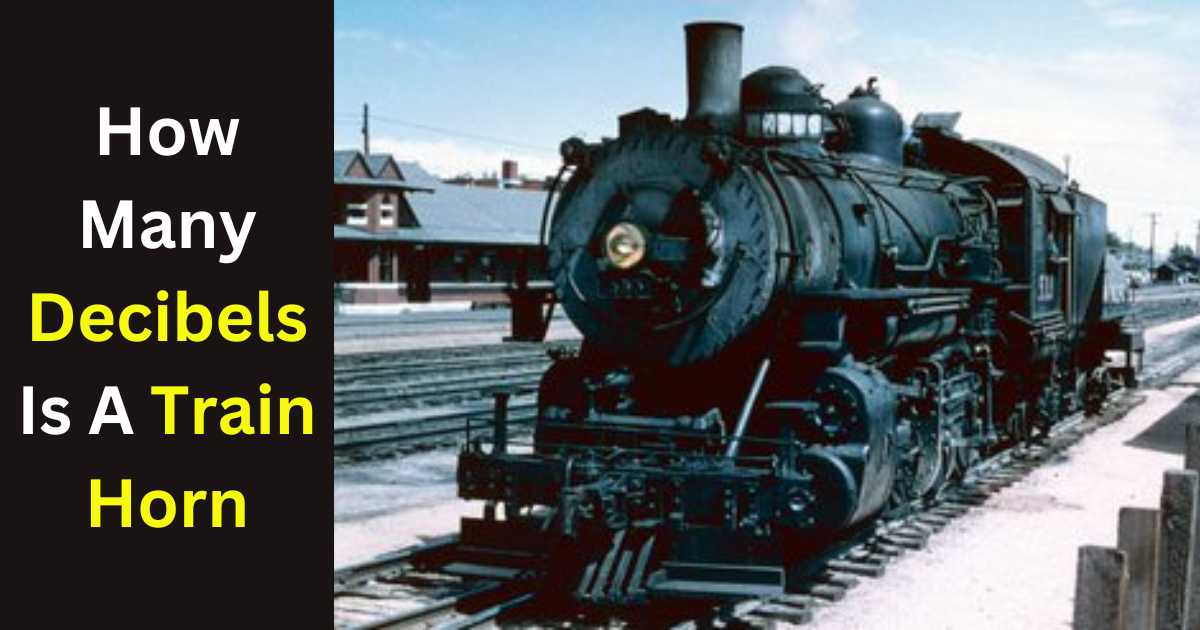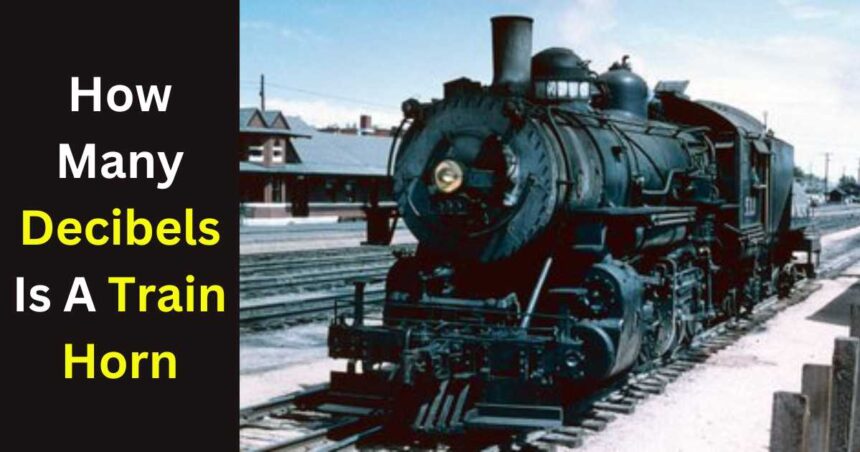How Many Decibels Is A Train Horn: Train horns are always heard in many places, making loud noises that remind us a train is coming. But did you ever think about how loud these horns really are? Unlike car horns that are quick and sharp, train horns are super loud. They’re made to be heard from far away and to be heard over all the other noises around, like traffic. They’re super important for safety because they warn everyone that a train is coming.

How Many Decibels Is A Train Horn
Unveiling The Decibel Power: How Loud Are Train Horns?
Train horns are really, really loud, usually ranging from 110 to 140 decibels (dB). To get how loud that is, let’s compare it to sounds we hear every day:
- Regular talking: 60 dB
- Using a hair dryer: 90 dB
- When a jet plane takes off: Up to 150 dB
So you see, train horns are as loud as some of the loudest sounds we come across every day.
The Science Behind The Screech: Why Are Train Horns So Loud?
Train horns are super loud because they’re big and made a certain way. They use compressed air to make a really strong sound, sometimes more than 150 pounds per square inch (PSI) of air pressure! Also, they’re put in a smart spot on the front of the train, so the sound travels forward and gets even louder.
Regulations And Variations: The Decibel Dance Of Train Horns
Rules usually say train horns have to be at least a certain loudness so people can hear them well. Like, in North America, Transport Canada says they have to be at least 96 decibels when you’re 100 feet away from the train.
But keep in mind, how loud the train horn is can change a bit depending on what kind of horn it is and if it’s working right.
How Much Does It Cost To Get A Car Repainted
Beyond The Noise: The Importance Of Train Horn Loudness
Even though train horns are super loud, they’re really important for keeping us safe. Their really loud sound tells people at crossings and nearby that a train is coming, which helps stop accidents and keeps people safe. So even though they might not be fun to hear, train horns are really important for reminding us how powerful trains are and keeping everyone safe.
Safety First: How To Be Aware Of Train Horns
When you’re near train tracks or crossings, be super careful. Always look but for trains, listen for the horn, and put safety first. Here are some more tips:
- Never walk on train tracks, especially if you’re using headphones or not paying attention.
- Always follow the signals and gates at crossings. Don’t try to cross if the lights are flashing or the gates are down.
- Pay attention to what’s around you. Just because you can’t see or hear a train doesn’t mean it’s not there.
Understanding Train Horn Decibels: A Call For Awareness
Train horns are important because they remind us how strong trains are and that they’re around. When we know how loud they are, we can be more careful and understand why they’re so crucial for keeping us safe on trains.
Beyond The Basics: Exploring The World Of Train Horns
This has just touched the surface of how interesting train horns are. Did you know there are different kinds of train horn, each making its own special sound? And some places have :quiet zones” where they try to make train horns less noisy?
If you want to learn more, here are some cool things to explore:
- How train horns have changed over time
- The different kinds of train horns and the sounds they make
- How train horn noise affects neighborhoods
- Ways to make train horns quieter without sacrificing safety
When we understand more about how loud train horns are and why they’re important, we can make sure everyone stays safe around trains.






